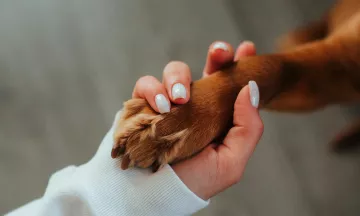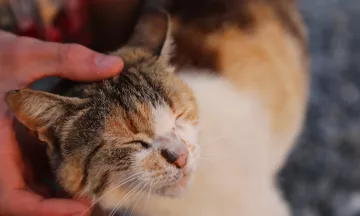Why is it bad for a pet to become overweight?
It's really important to prevent pet obesity, as your pet might suffer from some serious health issues as a consequence. Some of these issues include joint problems, lack of stamina, shortness of breath, lethargy and pain during exercise. Pets can also develop serious complaints such as diabetes, urinary tract problems and even depression.

How can I tell if my pet is overweight?
Healthy cats and dogs boast a visible waistline and an abdominal ‘tuck’. You should be able to feel their hip bones and ribcage. If you can no longer feel your cat or dog’s ribcage and they have an obvious ‘spare tyre’, then they’re likely overweight.
If you’re unsure whether your cat or dog is the correct weight, then pop to your local vet and ask them to check.
10 tips to ensure your pet maintains a healthy weight
Exercise your dog: On average, dogs should be walked 3-4 times a day, including 1 longer walk of approximately one hour. You can mix-up these walks with extra activities including running or playing games such as fetch, scent tracking and hide and seek.
Exercise your cat: Play hunting games with your cat in regular, short bursts rather than a single session. Cats love hiding and scrambling to high vantage points where they can survey their surroundings. As such, give your cat access to climbing trees and cardboard boxes.
Measure meals: Check the packaging of your pet's food to determine how many grams your pet needs on a daily basis. Weigh this accurately using kitchen scales. If you treat your pet to the odd snack, then give them less at mealtimes to compensate.

Keep an eye on your pet’s body weight: If you’re measuring your pet’s food and your pet is still gaining weight, gradually reduce the amount of each serving.
Make mealtimes a moment of calm: You can feed your pet several smaller portions during the day, rather than one big meal. And if you own multiple pets, feed them in separate spaces.
Creative feeding: Scatter biccies throughout the house so that your cat or dog is forced to ‘hunt’ for their food. You might also try slowing your pet's eating down using slow feeders and enrichment puzzles. Here is a guide to doing this for dogs and a guide for cats.
Moderate snack-giving: It's best not to feed your pet an endless stream of treats. Instead, reward them with attention and cuddles, and use treats for functional reasons, such as during training.
Break the begging: Pets with a tendency to beg can often be overweight. Begging is a learned behaviour that can also be broken. Try rewarding your pet by stroking, cuddling or praising them instead. Read more about how to stop your pet from begging.
Consider another pet: When it comes to being our pet's fitness coach, we humans simply cannot compete with other animals. So if the time is right, consider a second pet to keep your cat or dog physically and mentally challenged.
Find a pet sitter: Unable to provide enough stimulation for your cat or dog? Then arrange for a pet sitter to keep them amused during those periods that busy or out and about.





